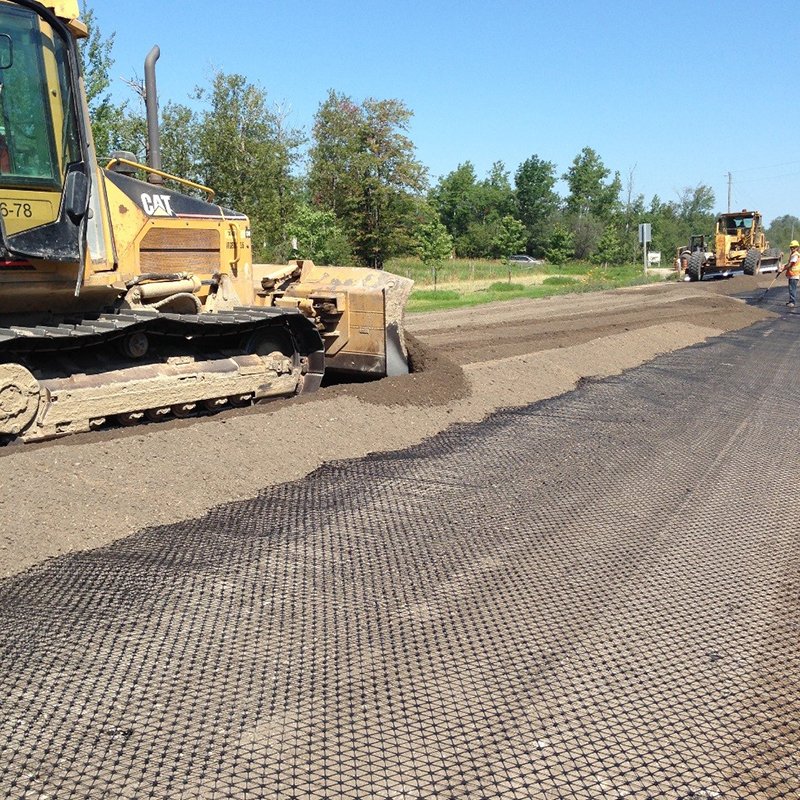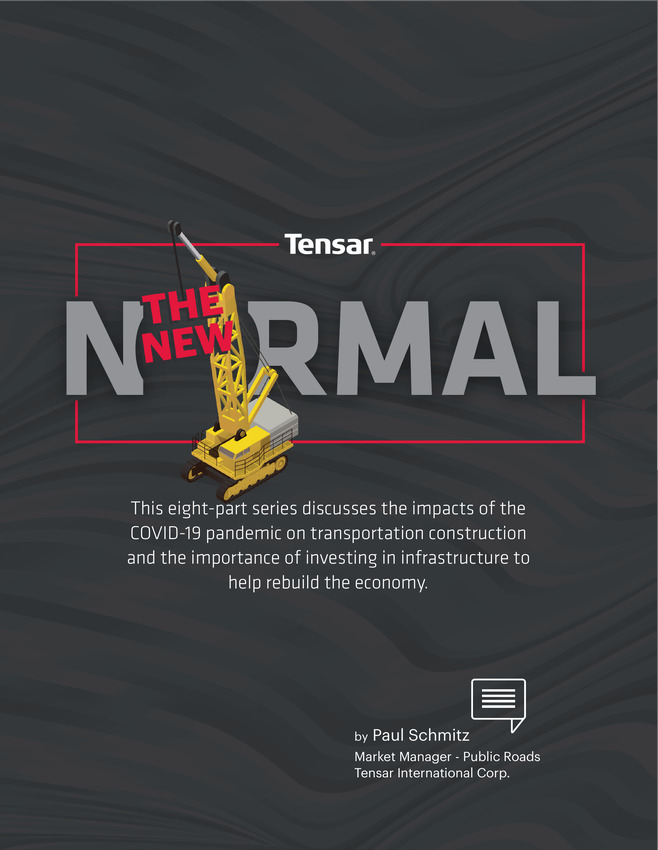Part 3: COVID-19 and Transportation Construction: Long-term Impacts
by Paul Schmitz, on June 19, 2020
 As we start to adjust to our new circumstances caused by COVID-19, companies operating in the transportation construction sector must also plan for long-term impacts. How will new regulations and business practices affect the future of construction? Could there be major shifts in operations that last long after the pandemic subsides? We asked our panel representing top engineering and construction firms, suppliers, state agencies and associations to share their perspectives. Below are just a few answers we received with the full discussion included in our eBook, "The New Normal."
As we start to adjust to our new circumstances caused by COVID-19, companies operating in the transportation construction sector must also plan for long-term impacts. How will new regulations and business practices affect the future of construction? Could there be major shifts in operations that last long after the pandemic subsides? We asked our panel representing top engineering and construction firms, suppliers, state agencies and associations to share their perspectives. Below are just a few answers we received with the full discussion included in our eBook, "The New Normal."
With the need for improved social and workplace safety nets, what will be the long-term impact to infrastructure costs due to the pandemic?
- Randell Iwasaki– (Executive Director - Contra Costa Transportation Authority) Currently, the long-range look is that infrastructure costs will have lower prices due to the historically low prices for crude oil. The new SIP orders require redundant positions, but eventually the construction safety officers will be trained and receive the correct certifications to deal with COVID-19 and future pandemics. We are concerned about the health and safety of our contractors’ employees. It takes skilled labor to build our bridges and highways. If they get sick and there aren’t enough employees working, it will delay our projects and raise the cost of building the infrastructure. This is why we partner with our contractors to help them to keep their employees healthy and safe.
- Michael Mangione (Senior Vice President – WSP USA) The impacts will be varied and wide-reaching. There will be additional costs for PPE, space requirements, workflows and processes. The market will need to determine where these costs will be carried. As there will be additional safety and operational processes in both design offices and construction sites, there will likely be a reduction of productivity, which will in turn result in longer project completion duration. In the nearer term, in states where construction shut downs have occurred, clients are likely facing delay claims by contractors. Lastly, if there are future waves of infection, there are likely impacts if members of a construction crew or office staff are infected (quarantine durations, schedule impacts and contractual terms).
- Nick DiBartolo (Vice President – Rogers Group, Inc.) There are obviously costs involved in modifying how we do business, but not all of those are increases. Take telecommuting for example: the reduction in travel expense can help offset some of the increases related to expanded industrial hygiene. In the short term, owners will likely see a discount, as raw material supply and labor looks for a place to go; long term, if some businesses fail to survive, owner costs will increase. Ensuring that construction remains designated as essential and getting, as close as practical, to a full economic reopening will be key to keep construction inflation in check.
What short-term and long-term changes do you envision will result from the pandemic related to the following?
Construction Process and Safety:
- Nick Goldstein (VP of Regulatory Affairs – American Road & Transportation Builders of America – ARTBA) There are positive outcomes resulting from the pandemic, and those include a heightened awareness of health risks that can arise from every day working conditions. We’ve learned we can and should do more to protect our health, whether those are health pathogens or hazardous chemicals or other contaminants. The required use of face coverings has helped workers better overcome resistance to wearing such PPE, and the consequences for not doing so are more acute and real. The other lesson learned is that we need to be more aware of the health hazards we may acquire at work and then take home to our families. The lessons associated with COVID-19 help us better understand the need to clean our clothing and PPE so we don’t bring contaminated items into our homes.
Engineering & Design:
- Randell Iwasaki – (Executive Director - Contra Costa Transportation Authority) I think that emerging methods of mobility will create more of an impact in the engineering & design industry than responding to a pandemic. The E&D industry has migrated to remote work sites in the past and are well set up to deal with the current work environment. Similarly, we have a program to reduce paper at our agency, and construction management firms that work with us are required to go paperless by utilizing modern software and hardware to be more efficient. They can inspect one aspect of a project on one end of a project and monitor compaction of the asphalt paving process on the other end utilizing our software and hardware requirements.
Permitting and Approval:
- Nick DiBartolo (Vice President – Rogers Group, Inc.) We've already seen public hearings being held by video, teleconference and webinar. While I think the public will still demand some sort of in-person forum, much of the process could be handled through these channels.
- David Lawry (Past APWA President and Director of Municipal Services for Chastain & Associates) Wet signatures will no longer be required allowing greater flexibility with permit issuance. Legal requirements will have to be adjusted in many cases to allow this change and benefit.
How has COVID-19 impacted transportation construction? We have the full discussion from our expert panelists, including lessons learned and preparation advice in our eBook, "The New Normal." This free resource shares all the insights we gathered covering these following key areas:
- Immediate and long-term implications for transportation construction
- Funding for public infrastructure
- Lessons learned
- Key takeaways and action steps to prepare for possible stimulus funding
Get Your Copy Now:
Topics:
- Flexible Pavement Road
- Rigid Pavement Road
- Public Roads
- Ports
- Railways
- Oil, Gas & Petrochemical
- Renewables
- Commercial & Industrial
- Airports
- Military
- Working Surfaces
- Rail Track
- Environmental Construction
- Haul Road
- Unpaved Road
- Concrete Pavers
- Parking Lot
- Subgrade Stabilization
- Asphalt Reinforcement
- Heavy Duty Roads & Surfaces
- Crane Pad Reinforcement
- Retaining Walls
- Reinforced Slopes
- ADD3 Capacity Improvement Systems
- InterAx
- TriAx
- BiAxial (BX)
- Uniaxial (UX)
- GlasGrid
- GlasPave
- Rapid Repair
- Mesa
- Olympia
- SierraScape
- Sierra Slope
- ARES
- Temporary Retaining Wall
- FilterGrid





